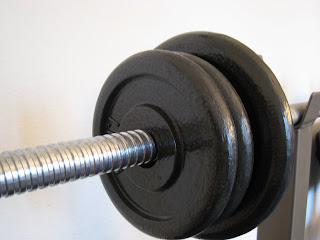Reducing the time, expense, and hassle of working out
 The only time in my life that I ever found it both easy and inexpensive to exercise is when I was studying abroad during my last semester of college. My minimal course load left me with plenty of time to do everything I wanted, including working out. I also had someone else covering most of my expenses, so I purchased a more expensive gym membership than I might have been willing to finance had it been my own hard-earned money.
The only time in my life that I ever found it both easy and inexpensive to exercise is when I was studying abroad during my last semester of college. My minimal course load left me with plenty of time to do everything I wanted, including working out. I also had someone else covering most of my expenses, so I purchased a more expensive gym membership than I might have been willing to finance had it been my own hard-earned money. Now that I work full-time and need to save lots of money for real-life adult expenses, I've had to find ways to minimize the time, expense, and hassle involved in working out. If you've found yourself with the same dilemma, here is an analysis of different exercise options to help you figure out which will be the most convenient and cost-effective for you.
2. If walking or jogging around your neighborhood isn't an option, look for community recreation facilities in or near your neighborhood. Community parks and pools are generally either free or very inexpensive as long as you are a resident of the city or neighborhood that owns the facility (sometimes you'll need proof of residency, like an ID or library card). For example, I live near a large, well-maintained lap swimming pool that I can attend for free seven days a week just for showing my library card. Without a card, it's still only $1.50 per visit. Community parks often offer tennis and basketball courts and sometimes a path for jogging. Some area schools leave their field gates unlocked during the evenings and weekends so that neighborhood residents can take advantage of the track and basketball court.
3. The next thing (or sometimes the first thing) most people think of is joining a gym. When joining a gym, it's best to join during a promotion of some sort--if you join in January when they're recruiting the new year's resolution crowd, it will be easy to get a low rate and possibly avoid the dreaded $100+ initiation fee. If you do decide to go this route, make sure to check out Jeffrey's article on how to bargain down the price of your gym membership, even if you are an existing member. If you do decide to spend the money on a gym, make sure to pick a gym that you like enough and that is convenient enough that you will go regularly, even if it isn't the cheapest gym available. A more expensive gym membership that you actually use is a better use of money than a cheap membership that you don't use.
Ideally, look for a gym that doesn't require you to sign a contract. Sometimes you can find small, neighborhood gyms that don't require a contract or have lower fees. Also, be sure to check the YMCA in your area. Sometimes you can purchase a day pass to their exercise facilities, which means that if you know you'll only go to the gym once a week, you can save a significant amount of money over the cost of a traditional monthly gym membership. Gyms can be wonderful because they offer a wide variety of cardio and weight equipment as well as group classes like spinning, kickboxing, and step aerobics which can help keep you motivated and prevent boredom. However, if you are a nine-to-fiver, the gym can be painfully crowded after work and on weekends, making it difficult to use the equipment you like. Class schedules don't always coincide with your schedule and some classes fill up so fast that if you can't arrive early, you'll never get a spot. Also, there's always someone who doesn't seem to understand the concept of only wearing your gym clothes once before washing them and someone who can't smell his own overpowering body odor.
4. If the gym isn't for you but you'd still like to have a variety of activities to choose from and/or potential interaction with other people, sign up for individual dance or exercise classes at a local dance studio or community college. Martial arts, boxing, and other team sports can be another option (yes, even for adults). By choosing one of these options, instead of being locked into the recurring monthly expense of a gym membership, you can sign up for classes as you come across ones that interest you and fit into your schedule rather than trying to force yourself to make it to a step aerobics class that you have to rush over to straight after work. When you're not locked into a gym membership, you'll potentially have a wider variety of classes to choose from.


Comments